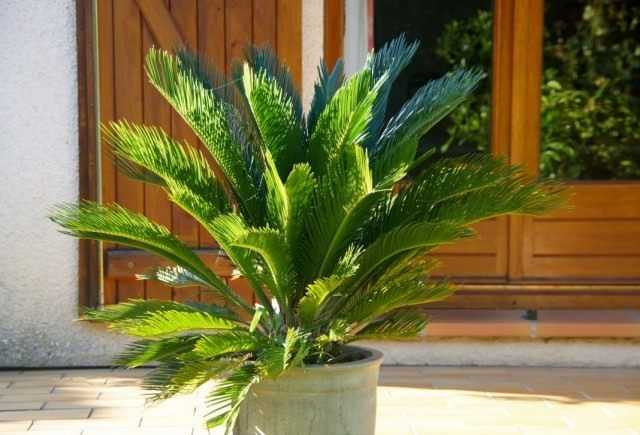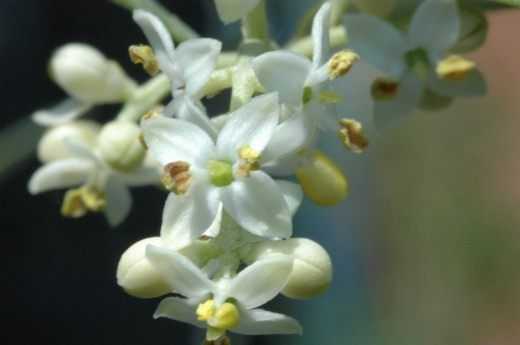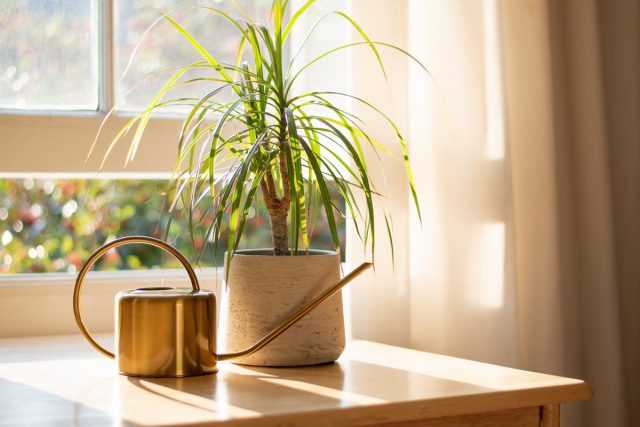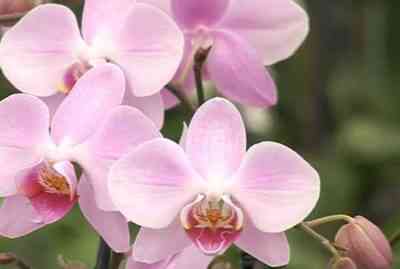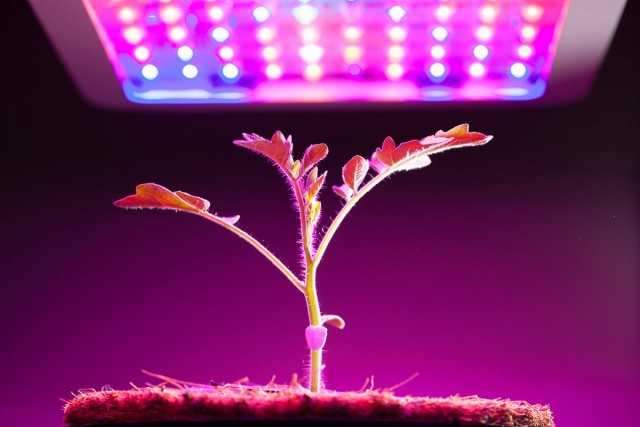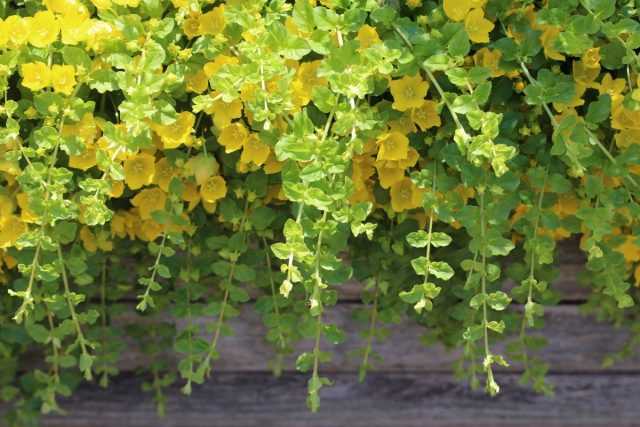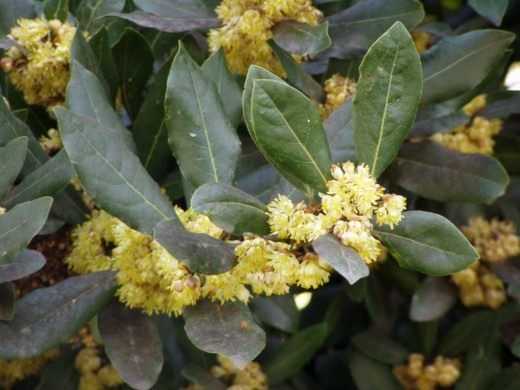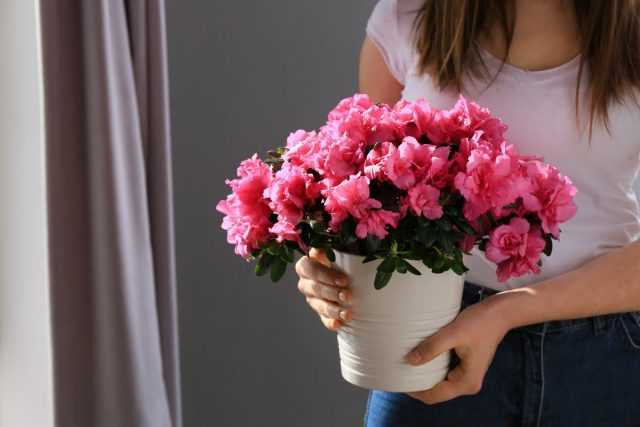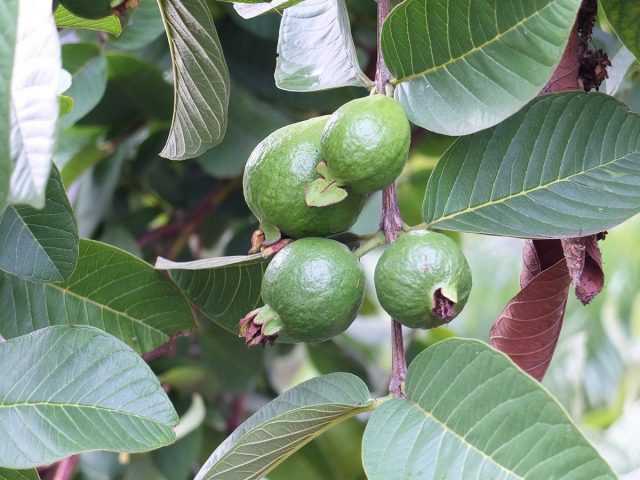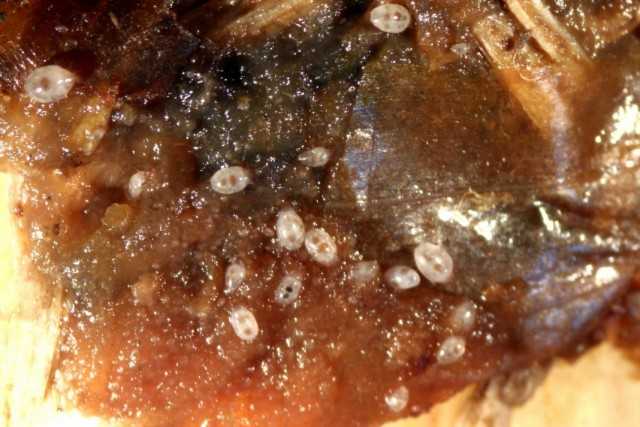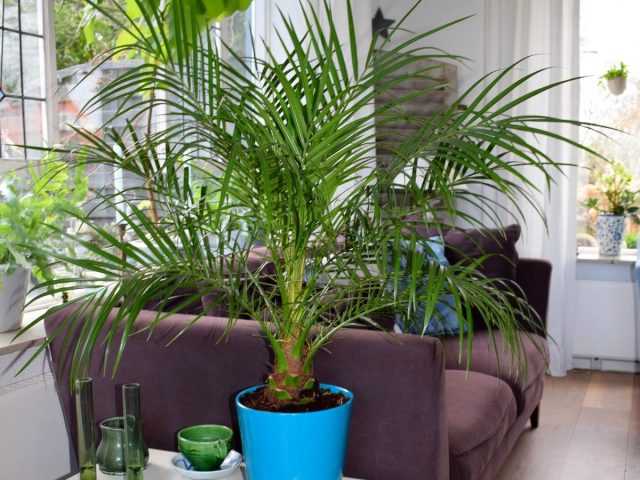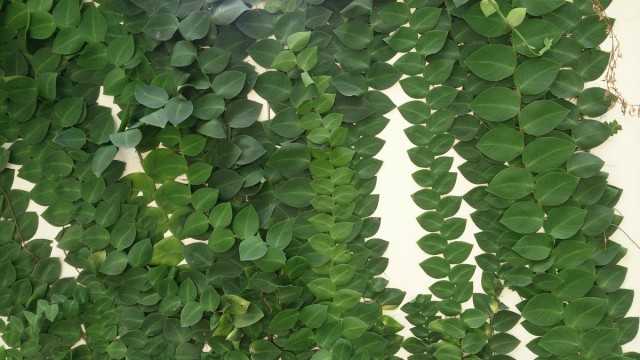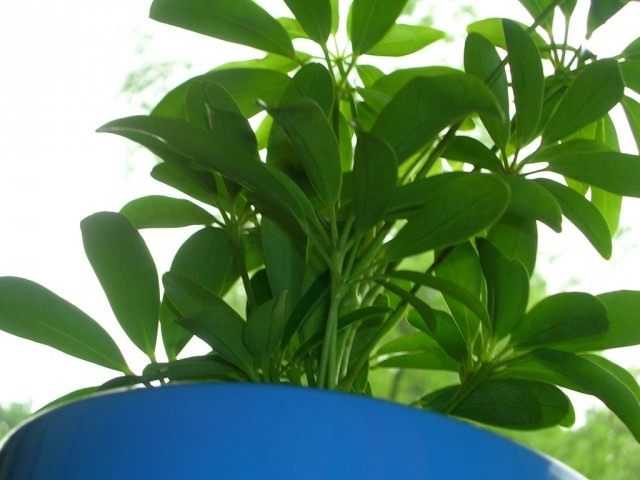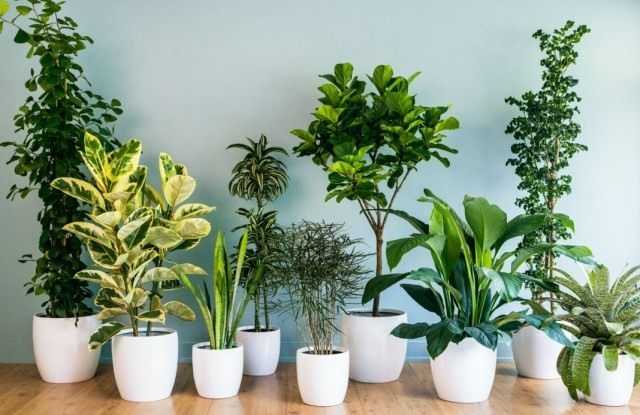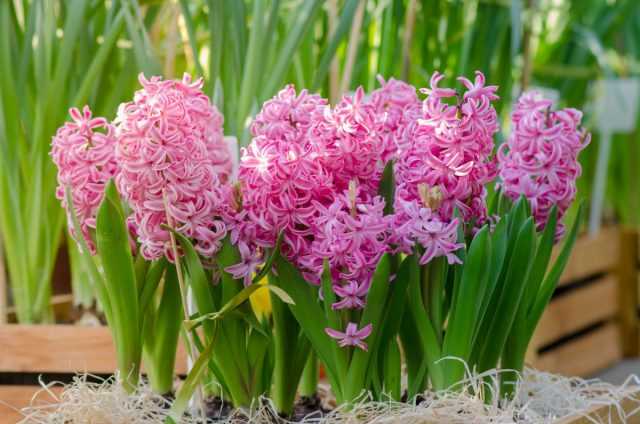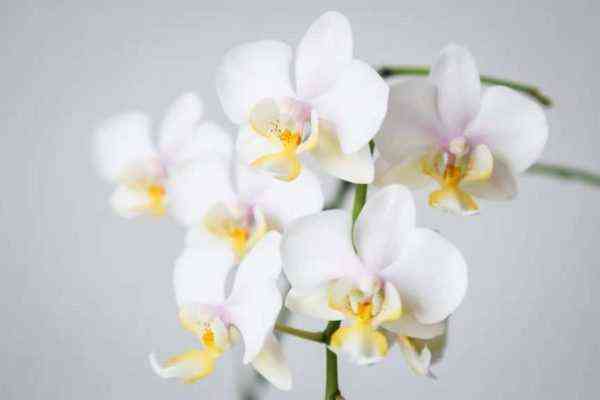The most common bromeliad, Gusmania, remains an enigma plant with a controversial reputation for many. Some consider it non-capricious, others – suitable only for flower showcases. Meanwhile, the Gusmania just need special care. The goblet rosettes of attractive leaves and the bright colors of the inflorescences that emerge from the center of the rosette on the sturdy peduncle are dazzling and exotic. It is a warm and moisture-loving plant for luxurious single accents in the interior.
Guzmania – effectively blooming and unpretentious in the right conditions
Contents:
Description of the plant
The toxicity of gusmania (substances from the sap of the plant strongly irritate the skin and mucous membranes) does not at all scare away flower growers from it. This bright, unforgettable and imposing plant is one of the trendy long-flowering accents.
Guzman (Guzmania) Is an evergreen epiphyte that forms a strict and spectacular star-shaped, goblet-shaped rosette of densely overlapping leaves. Guzmania is actually grown as an annual, or rather a once-flowering plant. After flowering, the rosette dies off, usually releasing several lateral offshoots.
The height of gusmanias is from 30 to 60 cm. In length, the strongly pointed, broad-linear leaves reach 40-70 cm. They are striking in their rigidity and density, more often monochromatic, but sometimes decorated with spots and stripes.
Guzmania can be found blooming all year round. Traditionally, they bloom in November, decorating rooms until the end of winter, and without lighting correction – only in spring. On average, flowering lasts 6 months.
Gusmania’s peduncle grows from a funnel of leaves. Strong, thickened, equal to or slightly higher than the length of the leaves, it bears an inflorescence ear, often star-shaped or cone-shaped. Authentic flowers are inconspicuous, white, in some species they do not open, remaining in buds. The beauty and “star-like” inflorescences are given by bright bracts, which are in harmony with the leaves in the rosette in shape and nature of growth.
The orange-red palette, thanks to breeders, is today expanded to yellow, white, purple and pink colors. Many varieties are bicolor.
Types of indoor gusmanias
The most popular varieties are spectacularly flowering. gusmania reed (Guzmania lingulata). Graceful star-shaped funnels of rich green leaves and bright orange-red star-shaped inflorescences are spectacular and catchy. It is worth choosing varieties according to the color of the leaves and inflorescences, the height and shape of the rosette – to your taste. There are adorable miniature varieties that are grown in groups and plants with irregular flowering.
Gusmania blood red (Guzmania sanguinea) attracts with an almost sessile inflorescence with narrow red bracts and wide, often striped leaves.
Gusmania mosaic (Guzmania musaica) strikes with beautiful long, up to 70 cm, leaves in a very spreading rosette with unique “zebra” variegated patterns. Small capitate inflorescences are simple, with bright pink bracts.
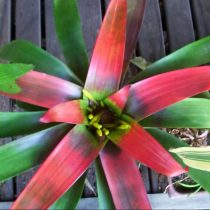
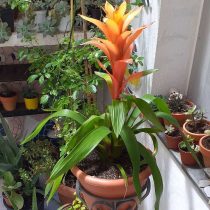
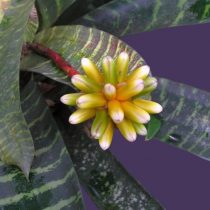
Guzmania one-headed (Guzmania monostachia) Is a pretty plant with narrow and softer light leaves and elongated red-white spikelets.
Gusmania Tsana (Guzmania zahnii) flaunts with bending lanceolate leaves with a longitudinal light strip, highlighted with a pink smear, and a red-yellow compact inflorescence.
The rare guzmania open-flowered (Guzmania dissitiflora) – graceful appearance with an unusual “rod-shaped” orange inflorescence.
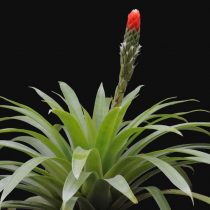


Growing conditions for room gusmania
Gusmanias are so good at adapting to lighting and so thermophilic that they seem to be created especially for interiors. They can be placed in light or semi-shaded areas of the interior, and on window sills. Gusmanias need protection from direct sun, they do not tolerate strong shading, but they perfectly tolerate fluctuations in lighting. For the winter, when flowering, it is better to increase the lighting.
Western windowsills are considered an ideal place. Gusmanias look great as live bouquets and accents on countertops.
Even in winter, the temperature for these plants should not fall below 18 degrees. They are not afraid of heat (up to 28 degrees) and feel great in living rooms. The optimal regime is 25 degrees during active vegetation and 20-21 degrees during flowering.
Guzmania love good air circulation, frequent ventilation, they need to be placed separately and freely. The plant is not afraid of warm drafts. In summer, it can be taken out into the open air in protected places.
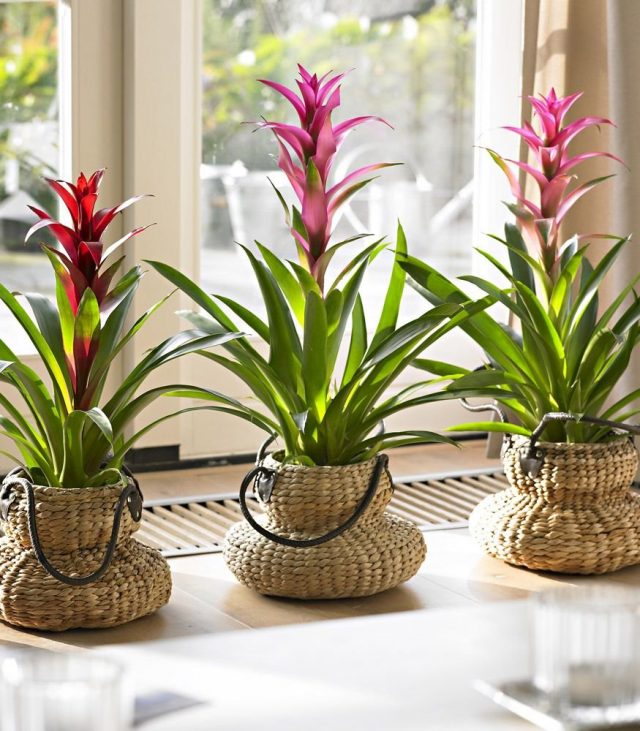
Home care
Due to the moisture-loving nature of gusmanias, they are often recommended to be grown in flower display cases. But most of the varieties are perfectly adaptable to room conditions and do with regular maintenance. After flowering, the plant is left until children are formed or thrown away.
Watering and air humidity
For gusmanias, it is desirable to maintain a constant, very light and uniform moisture in the earthen coma. They are prone to decay. During active growth, they are watered directly into the outlet, filling it just above half. The safest option is to drain the water after 15 minutes, filling the outlet every other day.
With enough experience, and if the plant is watered like this before purchase, the water level can be kept constant. Classic watering is ineffective, they should be neat, light, frequent, not creating a risk of dampness. Watering is reduced for the winter, refusing to water in the funnel when the temperature drops below 20 degrees. After flowering, water cannot be poured into the outlet either. Guzmania on supports is watered by immersion.
For watering gusmanias, only soft water is used, best of all – thawed or additionally purified. The water temperature should match the room temperature. Watering is desirable in the morning.
Gusmanias are comfortable with 60-80% humidity. Regular spraying (daily, in heat up to 3 times a day), installing containers of water or trays with wet bark helps to stabilize conditions.
The leaves of the plant must be kept clean. No polishes are allowed.
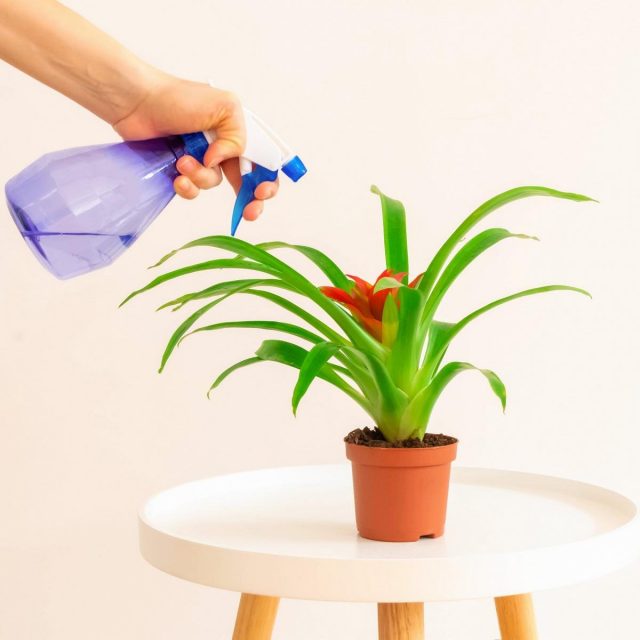
Top dressing and composition of fertilizers
Excess fertilizer is not for this plant. Top dressing for gusmanias is carried out through a rosette of leaves, adding fertilizers to the water for irrigation with a frequency of 1 every 4-6 weeks. It is better to use special fertilizers for Bromeliads, but a standard complex fertilizer with a half or three times reduced concentration is also suitable.
Pruning and shaping gusmania
Usually, the gusmania does not need pruning, the outlet is allowed to dry out freely after it has faded. If side rosettes do not appear, you can carefully remove the peduncle.
Damaged or dry leaf tips can be trimmed for more decorative effect, leaving a thin strip of dry cloth around the edge.
Transplant, containers and substrate
Guzmania is usually not transplanted, just transferring it to a permanent pot and, after flowering, separating the children.
It is customary to grow them in medium-sized, low, heavy pots or baskets. The standard diameter of the container for gusmanias is 10-12 cm, but it is better to calculate the volume yourself, dividing the height of the plant (from the soil line) by three to obtain the optimal diameter.
For gusmanias, a special substrate is needed. Ready-made soil mixes for Bromeliads are ideal, but substrates for orchids or palms are also suitable. The soil is independently composed of sphagnum and crushed fern roots (1 to 3) or from fibrous peat and leafy soil with the addition of sand and charcoal (1: 1: 0,5: 0,5). It is worth making sure of the rough texture, breathability and looseness. Moss, peat, bark, coconut are added to the soil for a loosening effect.
The roots of the plant are very fragile and must be handled with care. The root collar cannot be buried.
Read also our article Gusmania: care secrets.
Diseases and pests
Thrips, spider mites and scale insects most often “attack” plants kept in very dry air. In low temperatures and during overflow, Gusmania suffer from rot, spotting, anthracnose and other fungal diseases. Nematodes are very dangerous for them.

Read also our article 7 of the best winter flowering indoor plants.
Breeding gusmania
Guzmania reproduce vegetatively – separating the formed babies after they develop 3-4 leaves and their own roots about 2 cm long. After planting in separate containers, it is advisable to keep the plants in greenhouse conditions.
Sometimes babies form in the leaf axils. They are separated after cutting off 2 “covering” leaves of the mother socket, rooting in water until short roots appear.
Gusmania is grown less often from seeds. They are sown in a disinfected peat-sandy substrate, superficially, without covering with soil. In greenhouse conditions, crops are kept at a stable temperature of 23-25 degrees, with careful spraying and ventilation. The seedlings are kept under glass for the first two months after the emergence of the shoots. As independent plants, small gusmanias are planted only at the age of 6 months. Flowering from gusmanias can be expected not earlier than the third or fourth year.
